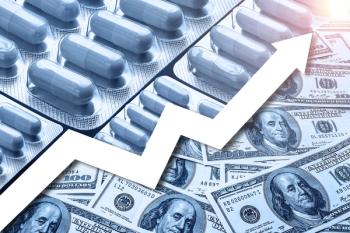
Driving Access to the Most Efficient Form of Healthcare
A look at the pharmaceutical value chain and how pricing concerns and patient centricity fits in to improving access.
Recently, it seems like we’re regularly met with headlines about the high cost of healthcare and rising prescription drug prices. And while it can be easy to read this news and wonder if our healthcare system is fractured, I want to take a step back and offer an important reminder: modern pharmacotherapy is improving lives, preventing some of the most devastating diseases and inspiring bold research to find better treatments for complex medical conditions. What’s more, the delivery and use of pharmaceuticals continues to be the most efficient form of healthcare, accounting for just 10% of total healthcare spending in 2016.1
It would be irresponsible, however, to neglect that challenges exist, as many people struggle to afford their medications. These circumstances have led to increased scrutiny over drug pricing and benefit design, causing stakeholders across healthcare to seek additional sources of value. We are seeing this everywhere-from industry consolidation to alternative care delivery and operational models among providers. This search also extends to distribution services, and it has led to questions about pharmaceutical distribution’s value proposition.
I believe that it’s important to understand where pharmaceutical distributors fit into the value chain and why the U.S. distribution model is still the most efficient and effective model in the world. It’s true that distributors are highly proficient logistics partners. We deliver pharmaceutical products to hundreds of thousands of sites of care every day, all while navigating a complicated regulatory environment and sustaining a complex supply chain. Beyond just logistics, however, distributors also serve as a critical financial partner, which is often an overlooked aspect of our industry. The ability to get pharmaceuticals to the right place at the right time is predicated on the distributor taking on financial risk, which ultimately benefits manufacturers, healthcare providers, and patients in meaningful ways.
When we provide logistics for pharmaceuticals, we are also taking title to the products and assuming the economic risk of carrying inventory, selling the product, and collecting payment. We do this whether it’s a $3 or a $300,000 therapy. When we pay manufacturers upfront for their products, it allows them to focus their capital more efficiently on core functions such as research, drug development, and commercialization.
On the other side of the supply chain, practitioners across the country are navigating tremendous change while delivering exceptional care. On top of that, the tight reimbursement environment is cash-strapping many providers. We help bridge the gap between dispense and reimbursement by providing the short-term financing of pharmaceutical products. This frees up cash-flow, ensures a consistent, simple workflow, and allows practitioners to focus on what matters most-caring for their patients.
The current fee-for-service model also provides risk-based compensation for the financial exposure taken on by wholesale distributors. Beyond compensation, managing a diversified portfolio of inventory and credit across a vast base of customers, manufacturers, and products allows distributors to reduce market risk and manage the supply chain at a lower cost of capital. With a lower cost of capital, healthcare distributors can operate with lean margins and ultimately help drive a more cost-effective supply chain.
Overall, our distribution model is exciting because it enables turnkey pharmaceutical access. A manufacturer’s product can be in thousands of sites of care on day one of launch, allowing patients to access the latest and most novel therapies as soon as they become available. Our distribution model also allows us to be the most effective and efficient partner to tens of thousands of community providers nationwide. These are providers that rely on us for more than product sourcing and delivery; they rely on us to help them navigate change, optimize business performance, implement the latest technology, amplify their value in the community, and most importantly, find more time to focus on what matters most-their patients. It’s through these partnerships that a rural community oncology practice can get access to a national clinical trial, or how an independent pharmacy can plan its legacy for years to come.
Bob Mauch is Executive Vice President & Group President, Pharmaceutical Distribution & Strategic Global Sourcing at AmerisourceBergen
References
Newsletter
Lead with insight with the Pharmaceutical Executive newsletter, featuring strategic analysis, leadership trends, and market intelligence for biopharma decision-makers.




